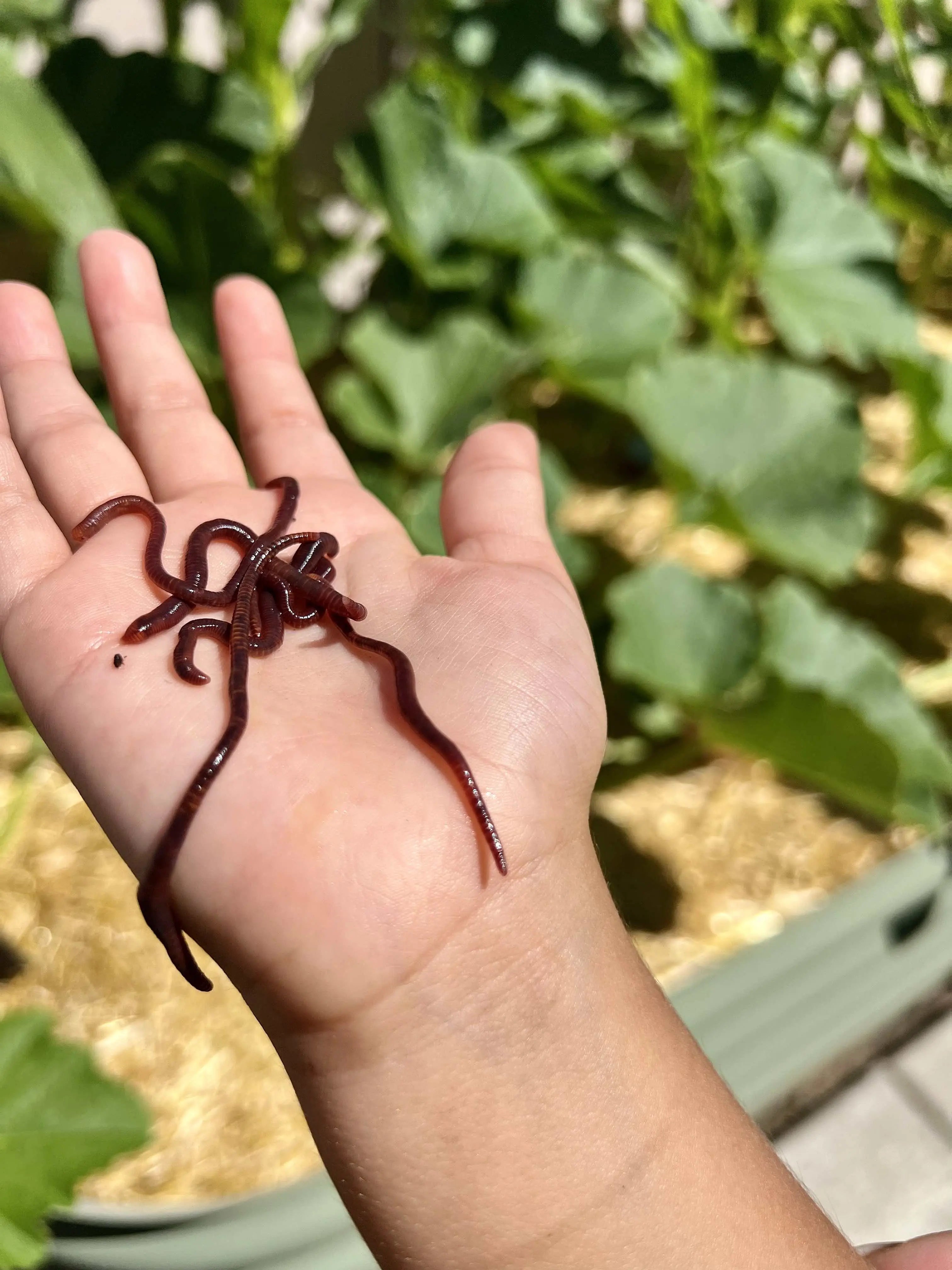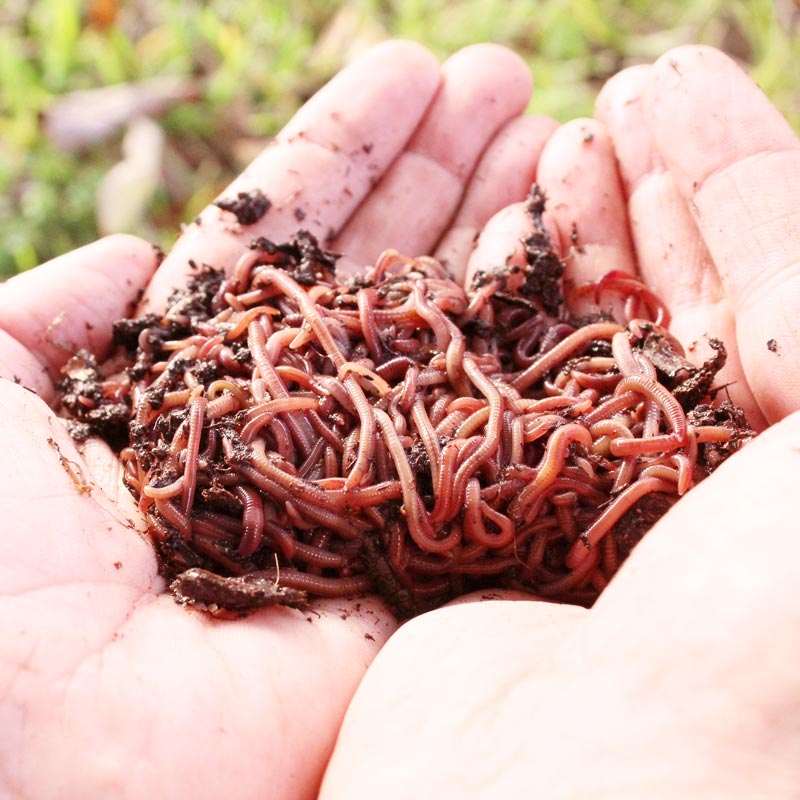Red Wiggler Worms - Effective Decomposers for Your Compost Bin
Red Wiggler Worms - Effective Decomposers for Your Compost Bin
Blog Article
Making The Most Of the Conveniences of Red Wiggler Worms: A Comprehensive Manual for Home Gardeners and Urban Farmers
In the realm of sustainable gardening methods, red wiggler worms stand as unrecognized heroes, quietly transforming organic waste into nutrient-rich castings that can work wonders for soil health. By exploring the complexities of just how to efficiently care for and maximize the advantages of red wiggler worms, people can open a riches of chances for enhancing the sustainability and performance of their horticulture undertakings.
Comprehending Red Wiggler Worms
Red Wiggler worms, renowned for their reliable composting abilities, are a types of earthworms extensively utilized in vermiculture techniques. These worms, clinically called Eisenia fetida, thrive in decaying organic product, making them ideal prospects for composting (Red Wiggler Worms). Red Wigglers are voracious eaters, capable of eating their very own weight in natural waste daily. Their digestive process breaks down organic matter into nutrient-rich spreadings, which are an important source for enhancing dirt and advertising plant development.
One secret quality of Red Wiggler worms is their reproductive rate. These hermaphroditic creatures possess both male and female reproductive body organs, permitting them to duplicate swiftly under favorable problems. A fully grown Red Wiggler can generate numerous children in a brief duration, ensuring a steady populace within a composting system.

Establishing a Worm Bin
When developing a worm bin for vermiculture functions, correct preparation and interest to information are essential for creating a favorable setting for Red Wiggler worms. Begin by picking a suitable container for your worm bin. This can be a plastic or wood container with a cover to preserve wetness degrees and protect the worms from light. Make certain that the bin has water drainage holes at the bottom to stop waterlogging.

Area the worm bin in a cool, dark place away from straight sunlight and severe temperatures. By adhering to these steps, you can establish up a flourishing worm container that will efficiently process natural waste into nutrient-rich vermicompost for your garden.
Feeding and Preserving Worms
Ensuring a balanced and nutritious diet is essential for the health and wellness and efficiency of Red Wiggler worms in a vermiculture system. It is essential to prevent feeding them citrus fruits, onions, garlic, dairy products, meat, and oily foods as these can be harmful to the worms or cause unpleasant odors in the container.
Proper dampness levels are likewise vital for the well-being of Red Wiggler worms. By faithfully checking their diet, dampness, and environmental problems, home garden enthusiasts and urban farmers can maintain a effective and healthy Red Wiggler worm populace for composting functions.
Harvesting Worm Spreadings
To successfully draw out nutrient-rich worm spreadings from the vermicompost, a methodical harvesting procedure is important for making best use of the composting benefits. The very first action in harvesting worm castings is to motivate the worms to move to one side of the bin.
After the castings have actually been collected, it is essential to divide any kind of staying worms from the spreadings to avoid hurting them throughout storage space or application. One reliable method is to produce Resources conical stacks of castings under intense light. Worms will naturally relocate far from the light, enabling easy splitting up and elimination.
Lastly, the gathered worm castings must be saved in an awesome, dark, Full Report and dry location to preserve their top quality and performance as a nutrient-rich soil change. By complying with these actions, home garden enthusiasts and city farmers can optimize the advantages of red wiggler worms in their vermicomposting systems.
Making Use Of Worm Castings in Horticulture
The unification of nutrient-rich worm spreadings right into garden soil can significantly boost plant growth and overall soil health. Worm castings, likewise called vermicast, are a natural fertilizer produced by red wiggler worms as they break down organic matter. These castings are abundant in essential nutrients like nitrogen, phosphorus, potassium, and useful germs that promote plant growth and boost dirt framework.
When using worm castings in horticulture, it is necessary to blend them completely into the soil or utilize them as a leading dressing around plants. The slow-release nature of worm castings makes certain a steady supply of nutrients to plants with time, lowering the threat of nutrient leaching and advertising long-lasting soil fertility. Additionally, worm spreadings assist improve dirt aeration, water retention, and microbial task, developing a healthy atmosphere for plant roots to thrive.

Conclusion
In conclusion, the utilization of red wiggler worms in home gardening and urban farming can substantially profit dirt health and wellness and plant growth. By understanding how to set up and maintain a worm bin, feed the worms properly, and harvest their nutrient-rich castings, garden enthusiasts can take full advantage of the benefits of these useful link earthworms.
In the realm of lasting horticulture methods, red wiggler worms stand as unrecognized heroes, quietly transforming natural waste right into nutrient-rich spreadings that can function wonders for soil health.When establishing a worm bin for vermiculture purposes, correct prep work and interest to detail are important for creating a conducive setting for Red Wiggler worms. The initial step in collecting worm spreadings is to urge the worms to migrate to one side of the bin. Worm spreadings, additionally recognized as vermicast, are a natural plant food produced by red wiggler worms as they damage down natural matter. By comprehending how to set up and keep a worm bin, feed the worms effectively, and gather their nutrient-rich castings, gardeners can take full advantage of the benefits of these earthworms.
Report this page